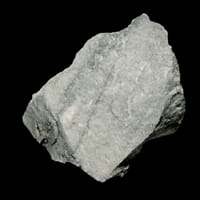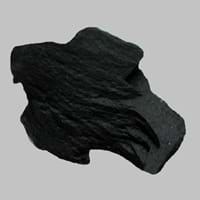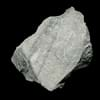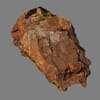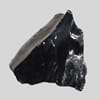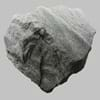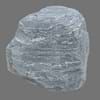Definition
Quartzite is a non-foliated metamorphic rock that forms by the metamorphism of pure quartz Sandstone
Lignite is a soft brownish coal which shows traces of plants and is intermediate between bituminous coal and peat
Discoverer
Unknown
Unknown
Etymology
From quartz + -ite
From French, Latin lignum wood + -ite1
Class
Metamorphic Rocks
Sedimentary Rocks
Sub-Class
Durable Rock, Hard Rock
Durable Rock, Soft Rock
Group
Not Applicable
Not Applicable
Other Categories
Medium Grained Rock, Opaque Rock
Coarse Grained Rock, Fine Grained Rock, Medium Grained Rock, Opaque Rock
Texture
Foliated, Granular
Amorphous, Glassy
Color
Black, Blue, Brown, Green, Light Grey, Purple, White, Yellow
Black, Brown, Dark Brown, Grey, Light to Dark Grey
Durability
Durable
Durable
Appearance
Lustrous
Veined or Pebbled
Interior Uses
Countertops, Decorative Aggregates, Flooring, Homes
Not Yet Used
Exterior Uses
As Building Stone, As Facing Stone, Garden Decoration, Paving Stone
Not Yet Used
Other Architectural Uses
Curbing
Not Yet Used
Construction Industry
Arrowheads, As Dimension Stone, Cement Manufacture, Construction Aggregate, Cutting Tool, for Road Aggregate, Making natural cement, Production of Glass and Ceramics, Rail Track Ballast, Roadstone
for Road Aggregate, Steel Production
Medical Industry
Not Yet Used
Not Yet Used
Antiquity Uses
Artifacts, Jewellery, Monuments, Sculpture
Not Yet Used
Commercial Uses
An Oil and Gas Reservoir, As armour rock for sea walls, Cemetery Markers, Commemorative Tablets, In aquifers, Laboratory bench tops, Petroleum reservoirs, Soil Conditioner, Source of Magnesia (MgO), Tombstones, Used in aquariums
Electricity Generation
Types
Not Available
Xyloid Lignite or Fossil Wood and Compact Lignite or Perfect Lignite
Features
Generally rough to touch, Is one of the oldest rock
Generally rough to touch, Helps in production of Heat and Electricity, Used as fossil fuel
Archaeological Significance
Monuments
Used
Not Yet Used
Famous Monuments
Data Not Available
Not Applicable
Sculpture
Used
Not Yet Used
Famous Sculptures
Data Not Available
Not Applicable
Pictographs
Not Used
Used
Petroglyphs
Not Used
Used
Figurines
Used
Not Yet Used
Formation
Quartzite forms from sandstone and the mineral quartz being put under extreme heat and pressure.
Coal formation takes place due to accumulation of plant debris in a swamp environment. The Coal formation process continues, as peat turns into lignite brown or black coal at increasing heat and pressure.
Mineral Content
Chlorite, Epidote, Hematite, Kyanite, Magnetite, Muscovite or Illite, Quartz
Not Available
Compound Content
Aluminium Oxide, CaO, Iron(III) Oxide, MgO, Sodium Oxide, Silicon Dioxide
Carbon, Hydrogen, Nitrogen, Oxygen, Sulphur
Types of Metamorphism
Burial Metamorphism, Cataclastic Metamorphism, Hydrothermal Metamorphism, Regional Metamorphism
Not Applicable
Types of Weathering
Biological Weathering, Chemical Weathering, Mechanical Weathering
Biological Weathering, Chemical Weathering, Mechanical Weathering
Types of Erosion
Chemical Erosion, Coastal Erosion, Water Erosion, Wind Erosion
Chemical Erosion, Water Erosion, Wind Erosion
Grain Size
Medium Grained
Medium to Fine Coarse Grained
Fracture
Uneven, Splintery or Conchoidal
Conchoidal
Porosity
Less Porous
Highly Porous
Luster
Vitreous
Dull to Vitreous to Submetallic
Compressive Strength
Not Available
Cleavage
Indiscernible
Non-Existent
Toughness
1.9
Not Available
Specific Gravity
2.6-2.8
1.1-1.4
Transparency
Transparent to Translucent
Opaque
Density
2.32-2.42 g/cm3
800-801 g/cm3
Resistance
Heat Resistant, Impact Resistant, Pressure Resistant, Wear Resistant
Heat Resistant
Deposits in Eastern Continents
Asia
China, India, Israel, Russia, South Korea, Thailand, Turkey
Bangladesh, Burma, Cambodia, China, India, Indonesia, Kazakhstan, Malaysia, Mongolia, Pakistan, Turkey, Vietnam
Africa
Ethiopia, Morocco, South Africa, Zimbabwe
Botswana, Kenya, Morocco, Mozambique, South Africa, Tanzania
Europe
England, Italy, Norway, Scotland, Sweden, United Kingdom
Belgium, Bulgaria, England, France, Germany, Greece, Hungary, Kosovo, Netherlands, Norway, Poland, Romania, Serbia, Slovakia, Slovenia, The Czech Republic, Ukraine, United Kingdom
Others
Greenland
Not Yet Found
Deposits in Western Continents
North America
Bahamas, Canada, USA
Canada, Mexico, USA
South America
Brazil, Colombia, Venezuela
Brazil, Chile, Colombia, Venezuela
Deposits in Oceania Continent
Australia
New Zealand, Queensland, Western Australia
New South Wales, Queensland, Victoria
All about Quartzite and Lignite Properties
Know all about Quartzite and Lignite properties here. All properties of rocks are important as they define the type of rock and its application. Quartzite belongs to Metamorphic Rocks while Lignite belongs to Sedimentary Rocks.Texture of Quartzite is Foliated, Granular whereas that of Lignite is Amorphous, Glassy. Quartzite appears Lustrous and Lignite appears Veined or Pebbled. The luster of Quartzite is vitreous while that of Lignite is dull to vitreous to submetallic. Quartzite is available in black, blue, brown, green, light grey, purple, white, yellow colors whereas Lignite is available in black, brown, dark brown, grey, light to dark grey colors. The commercial uses of Quartzite are an oil and gas reservoir, as armour rock for sea walls, cemetery markers, commemorative tablets, in aquifers, laboratory bench tops, petroleum reservoirs, soil conditioner, source of magnesia (mgo), tombstones, used in aquariums and that of Lignite are electricity generation.
